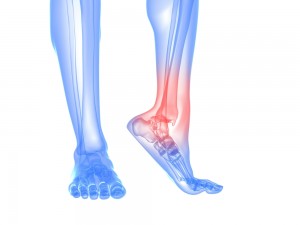Ankle / Foot Pain
Achilles Injuries
An ankle sprain occurs when the fibrous bands of tissue called ligaments become stretched or torn from excessive force which can result from a variety of injuries including rolling of the ankle, direct trauma, or sudden twisting. Ligaments are responsible for providing stability to the ankle joint. Sprains or tears can cause severe pain and instability.
The vast majority of ankle sprains occur when the ankle rolls outward, called “inversion”, thereby injuring the ligaments on the outer (or lateral) part of the ankle. In these cases, the anterior talofibular ligament (ATFL) is the most commonly injured. Less commonly, the ankle rolls inward, called “eversion”, resulting in injury to the inner (or medial) part of the ankle.
Ankle sprains can be graded based on the extent of the injury as follows:
First Degree Sprains – one or more ligaments are stretched, accompanied by mild pain, bruising, inflammation, difficulty walking, and tenderness.
Second Degree Sprains – one or more ligaments are partially torn, producing moderate pain, bruising, inflammation, and the inability to bear weight.
Third Degree Sprains – one or more ligaments are completely torn, resulting in severe pain and swelling, bruising, joint instability, and loss of function.
Treatment depends on the severity of symptoms. Acute ankle sprains can be treated with rest, ice, compression, and elevation (commonly referred to as the RICE method), non-steroidal anti-inflammatory drugs (NSAIDS), a brace or walking boot, and physical therapy. Platelet Rich Plasma (PRP) can help accelerate healing for chronic ankle sprains.

